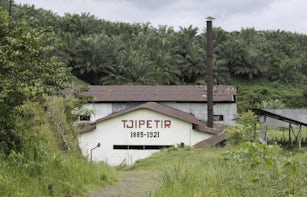This text was written after a decade of international exhibitions dedicated to looking back to the 1960s and 1970s – from ‘Global Conceptualism’ in New York (1999) to ‘The Age of Discrepancies’ in Mexico City (2007). Drawing from the reflection on a queer cartography by Paul B. Preciado (and experiments such as the Transvestite Museum by the late drag queen Giuseppe Campuzano, not directly mentioned), the essay posed questions on art-historical and curatorial approaches, on what would be a historiography that goes beyond identity and identification, and how to counter hegemonic vocabularies shaped by the North and later disseminated as global markers. In a current time where the prevailing neoliberal policies are resulting in the simplification of historical narratives, and the consolidation of identity politics is based on normative and regulatory methods of social recognition, forms of radical disruption could be still found in strategies of distantiation, in betraying the seeming social facts of realist historiography, and deploying other forms of belonging and undomesticated ways of naming, interacting, showing, telling and embodying. — MAL

A piece that is essentially the same as a piece made by any of the first Conceptual artists, dated two years earlier than the original and signed by somebody else.
– Eduardo Costa 01
I
On 28 April 1999 the exhibition ‘Global Conceptualism: Points of Origin, 1950s–1980s’ opened at New York’s Queens Museum of Art. Organised by Luis Camnitzer, Jane Farver and Rachel Weiss, consisting of eleven geographically defined sections and curated by a large, international group of art historians and researchers, the exhibition formulated one of the riskiest and most controversial interpretations of so-called Conceptual art at an international level. The show was ambitious. Its structure created a geographical spill-over that called into question the lesser or secondary place to which certain critical productions had been consigned. The framework of analysis was the global set of social and political transformations that have taken place since 1950, and the emergence of new forms of political action that formed the backdrop to a renewed repertoire of visual language. Such a scope allowed the curators to gather aesthetic proposals not defined in the exhibition by a Conceptualist ‘aesthetics of immateriality’, but instead by their capacity for intervention. 02 This approach, without doubt, shifted the very rules according to which the history of Conceptual art had been written. Those radical changes of the modes of producing and giving value to art exposed by ‘Global Conceptualism’ reveal complex processes in which political subjectivities oppose the consensual organisation of power and its distribution of places and roles, mobilising singular and collective resistances and dissenting energies.

Ten years on, the shockwaves can still be felt, perhaps even more intensely than at the time. In different ways, ‘Global Conceptualism’ updated some of the debates that had been attempting to raise the issue of subjectivity in social practices from a postcolonial perspective, disputing the geographical and temporal orders of a modern or colonial Occidentalism. 03Hence, it was no surprise that the show became one of the most quoted (and most questioned) referents of the revival of 1960s and 70s critical production that has taken place over the past decade in exhibitions, seminars and publications around the world.
While much has been said about the decentralising virtues of ‘Global Conceptualism’, in retrospect its most significant legacy appears not only to be the broadening of the Conceptual art map (a move that had a bearing on several subsequent curatorial projects), but the way in which the exhibition questioned the identity of a Conceptual art with universal aspirations. The curatorial operation of ‘Global Conceptualism’ started from a categorical distinction between ‘Conceptual art’ – understood as a North American and Western European aesthetic development associated with a formalist reduction inherited from abstraction and Minimalism – and ‘Conceptualism’, a term denoting a critical return to an ‘ordering of priorities’ that made visible certain aesthetic processes on a transnational level, allowing for diverse historical, cultural and political narratives to be set in place. 04 Concept-ualism was presented as a phenomenon that took place in a ‘federation of provinces’, with the ‘traditional hegemonic centre [being] one among many’, drawing a multiplicity of points of origin and questioning the privileged position claimed by Western modernity and its politics of representation.05 The exhibition seemed to work as a performative apparatus determined to re-politicise, reconfigure and rewrite the memory of those decades. As a result Conceptual art, which from the perspective of the United States and Western Europe had until then been an unavoidable prism for reading other critical productions, appeared fractured.
The shrewdness of the ‘Global Conceptualism’ gesture no doubt managed to effectively dominate the critical framework from which one would contemplate and validate those antagonistic practices. But more importantly, and perhaps without intending to, it allowed for the reconsideration of Conceptualism as the effect of a discourse (or multiplicity of discourses) that had itself caused breaks and a major questioning of the fabric of certain local memories – albeit in some cases at the expense of reinforcing lineages and typologies. These are complex manoeuvres, and their political implications must be addressed. What do we achieve today by reflecting on Conceptual art’s radical dimension from the perspective of the ways in which it has been historicised? How should we assess the political impact of such histories, and their effect on possible forms of recognition? Furthermore, how might we assess this effect on the production of certain forms of subjectivisation and sociability? 06




